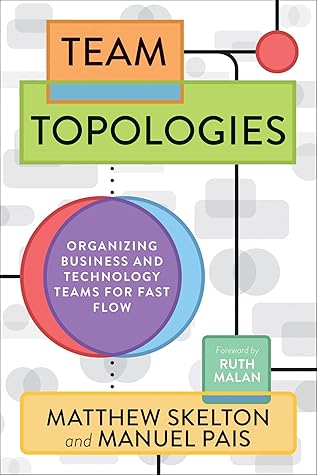More on this book
Community
Kindle Notes & Highlights
Read between
August 16, 2022 - April 9, 2023
Periods of technical and product discovery typically require a highly collaborative environment (with overlapping team boundaries) to succeed.
The key takeaway here is that thinking of software architecture as a standalone concept that can be designed in isolation and then implemented by any group of teams is fundamentally wrong.
When cognitive load isn’t considered, teams are spread thin trying to cover an excessive amount of responsibilities and domains. Such a team lacks bandwidth to pursue mastery of their trade and struggles with the costs of switching contexts.
We need to put the team first, advocating for restricting their cognitive loads.
an organization that is arranged in functional silos (where teams specialize in a particular function, such as QA, DBA, or security) is unlikely to ever produce software systems that are well-architected for end-to-end flow.
Our research lends support to what is sometimes called the “inverse Conway maneuver,” which states that organizations should evolve their team and organizational structure to achieve the desired architecture. The goal is for your architecture to support the ability of teams to get their work done—from design through to deployment—without requiring high-bandwidth communication between teams.
For a safe, rapid flow of changes, we need to consider team-scoped flow and design the software architecture to fit it. The fundamental means of delivery is the team (see more in Chapter 3), so the system architecture needs to enable and encourage fast flow within each team.


